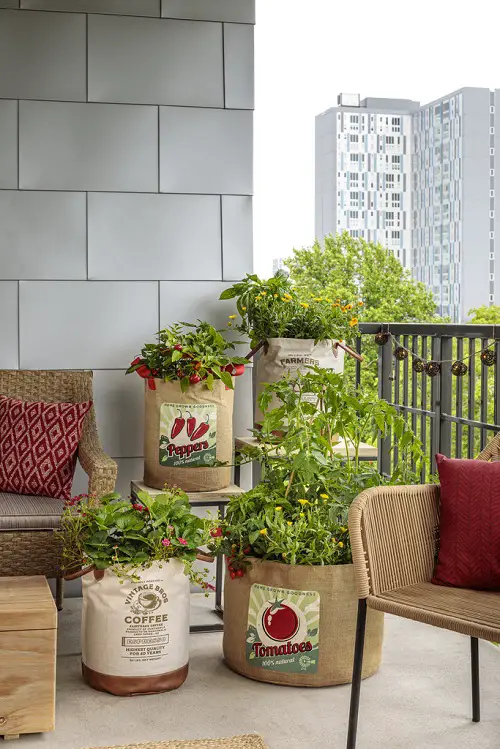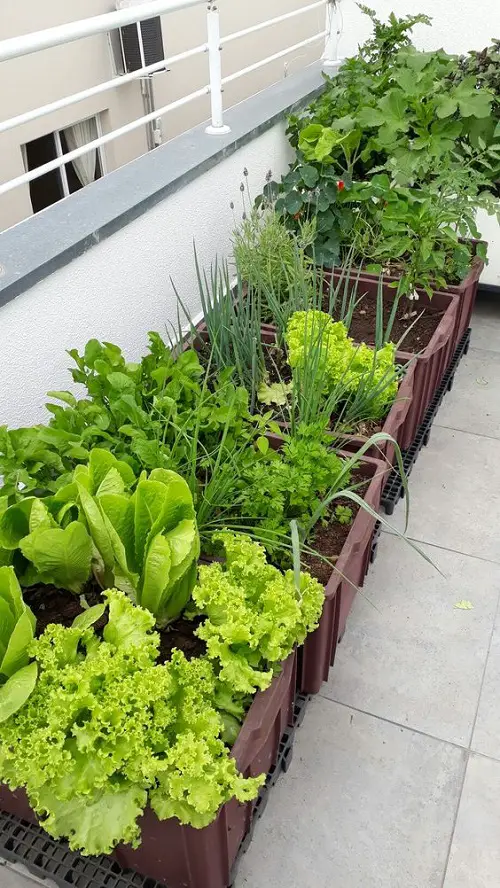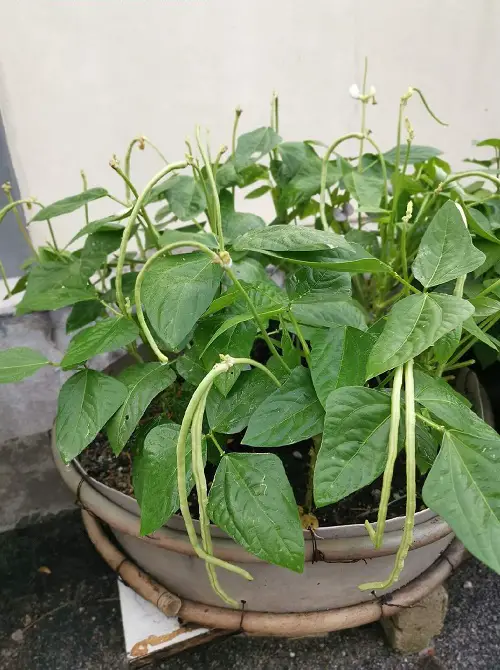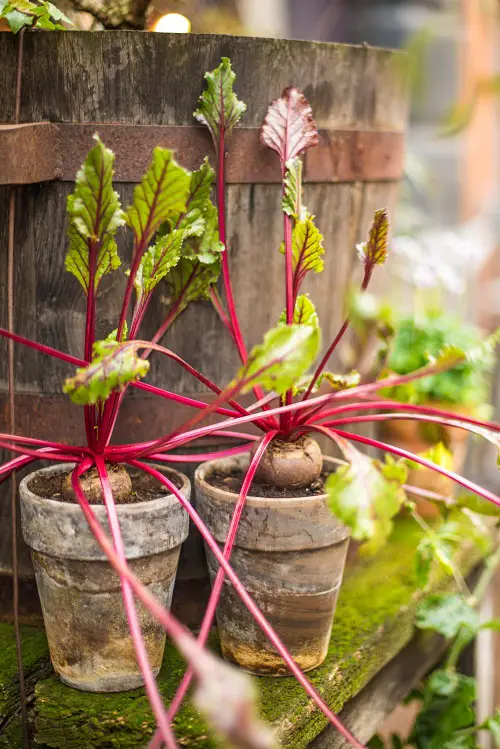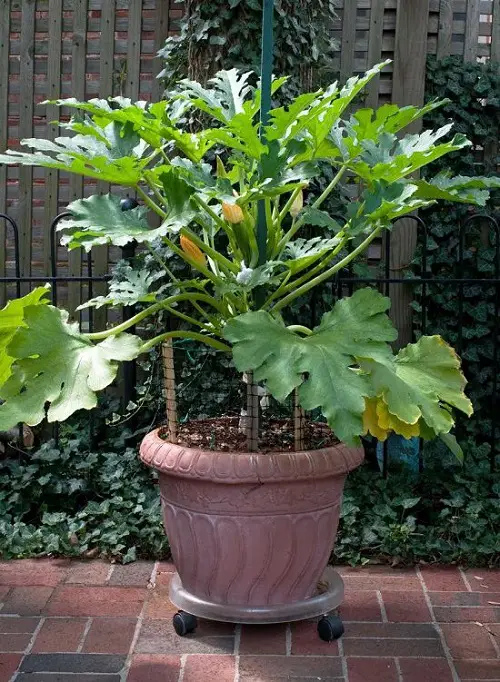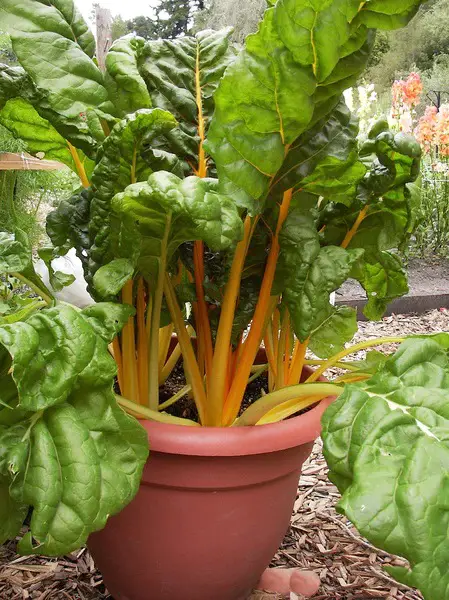Want to grow more in less? Here are the Most Productive Vegetables for a Balcony and Patio Garden so you can enjoy fresh veggies all year!
Transform your home into a flourishing garden with the Most Productive Vegetables for a Balcony and Patio Garden, ensuring a plentiful yield in limited space and enhancing your green thumb experience.
Most Productive Vegetables for a Balcony and Patio Garden
If you’re working with a small space, such as a balcony, you’ll want to opt for vegetables that are compact, high-yielding, and fast-growing to maximize your harvest.
1. Tomatoes
Varieties such as ‘Roma’, ‘Patio’, ‘Tiny Tim’, or ‘Tumbling Tom’ for containers. They do not become overly large and still produce an abundance of fruit.
2. Leafy Greens
Lettuce, spinach, Swiss chard, and kale can be harvested leaf-by-leaf, allowing for a continuous yield throughout the season. They also grow well in containers.
3. Radishes
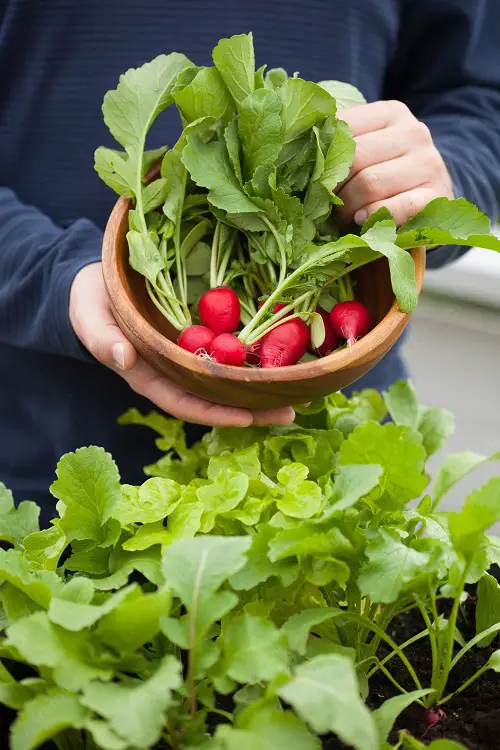
These grow quickly and take up minimal space. Some varieties are ready to harvest in less than a month are:
- ‘Cherry Belle’: This variety is a popular choice for its quick growth and round, red roots.
- ‘Early Scarlet Globe’: This variety can be ready in about three weeks and has a slightly larger size than ‘Cherry Belle’. It’s round and red, with a mild flavor.
- ‘Champion’: Another variety that matures in about three weeks, ‘Champion’ radishes are round, crisp, and red.
- ‘French Breakfast’: This variety has an oblong shape with a red top and white bottom. It’s ready to harvest in about three to four weeks.
- ‘Saxa 2’: A very fast maturing variety, Saxa 2 can be ready in as little as 18 days. It produces small, round, bright red radishes.
Here is Everything About Growing Radishes In Containers & Pots
4. Herbs

While technically not a vegetable, herbs like basil, rosemary, parsley, thyme, and cilantro are high-yield and continually produce throughout the season.
Here are the best ways to preserve herbs after harvesting them
5. Peppers
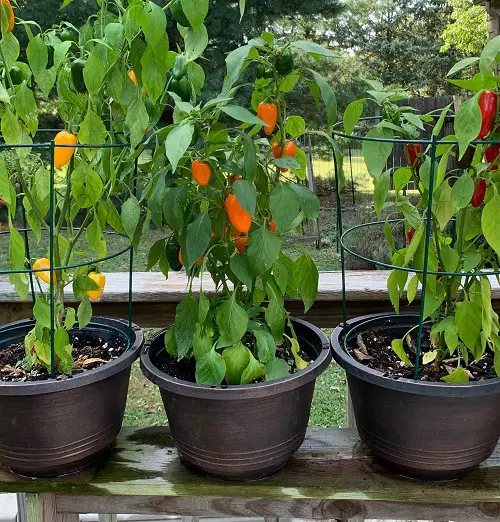
Both hot peppers and bell peppers can produce a good amount of fruit in a small space, especially if well cared for. Some of the faster-maturing varieties include:
- ‘Early Jalapeno’: A hot pepper variety that typically matures in about 60-65 days.
- ‘Hungarian Hot Wax’: Also known as ‘Banana Pepper’, this is a moderately hot pepper that matures in about 65-70 days.
- ‘Cayenne Long Slim’: A hot pepper variety that matures in about 70 days.
- ‘California Wonder’: A popular bell pepper variety that typically matures in about 70-75 days.
- ‘Gypsy’: A sweet bell pepper that can mature in about 60-65 days.
Here are 11 Top Secrets to Grow Best Pepper Plants
6. Green Beans
Opt for pole-over-bush varieties for containers. The most significant advantage of pole beans for small spaces is their vertical growth habit.
Pole beans grow upwards and can be trained along trellises, poles, or other supports, making efficient use of vertical space. This allows you to grow a productive crop even in a small footprint. Grow these:
- Blue Lake FM-1K Pole: This variety matures in approximately 60-70 days. The Blue Lake bean is a classic favorite, known for its good flavor and reliability.
- Kentucky Wonder Pole: Also known as ‘Old Homestead’, this variety has been a favorite of many gardeners for over 100 years. It matures in approximately 65 days and produces 8-9 inch long pods.
- Northeaster Pole: This is a Romano-type bean that matures in about 55 days. The beans are wide and flat and have a delicious flavor.
- Emerite Pole: This French variety matures in about 60 days. It is known for its slender, flavorful pods.
- Rattlesnake Pole: Named for its distinctive purple streaks (which disappear when cooked), this variety matures in about 65-75 days. It’s very productive and tolerant of heat and drought.
- Fortex Pole: This is another French variety that produces extra-long, round pods. It matures in about 60 days and remains tender even when the beans inside have grown large.
- Gold of Bacau Pole: This Romanian heirloom matures in about 60 days. It has flat, yellow pods that are very tasty.
- Purple King Pole: A beautifully colored variety, with purple flowers and deep purple pods. Matures in about 60-75 days.
7. Beets
This root vegetable grows well in containers, and both the beetroot and the greens can be eaten, increasing your harvest. You can grow:
- ‘Detroit Dark Red’: This variety is a classic favorite, known for its sweet flavor and smooth texture. The roots grow to about 2-3 inches in diameter, making them a good size for containers.
- ‘Cylindra’ or ‘Formanova’: These beets have a unique, elongated shape, and are known for their sweet flavor. They’re also great for containers because they grow more deeply than they do wide, which can be a better fit for pot cultivation.
- ‘Bull’s Blood’: This variety is not only good for its sweet, tender roots but also for its dark red leaves, which are delicious when harvested young for salads. This variety is also more tolerant of warmer temperatures than some other beet varieties.
Here is How to Grow Beets in Pots
8. Cucumbers

Many cucumber plants are vining plants that love to climb, which can be a benefit in a small space. By training cucumber plants to grow up a trellis, cage, or stake, you can maximize your yield while minimizing the footprint on your balcony. You can grow:
- ‘Bush Slicer’: This is a great dwarf variety perfect for containers. It produces sweet and juicy 6-8 inch fruits on compact plants.
- ‘Patio Snacker’: A very compact, climbing cucumber that produces delicious, crisp, and small cucumbers. It’s perfect for containers and does well with a small trellis to climb.
- ‘Spacemaster’: This is a popular variety for container gardens because it’s a compact bush variety that produces a decent yield of flavorful cucumbers.
- ‘Picklebush’: If you’re a fan of pickles, this variety could be perfect for you. It’s a compact variety that produces excellent cucumbers for pickling.
- ‘Salad Bush’: As the name implies, this cucumber variety is perfect for salads. It’s a dwarf, bushy variety that produces full-sized slicing cucumbers.
Here is How to Grow Cucumbers in Small Gardens
9. Eggplant
This award-winning eggplant variety is compact and highly productive. The plants produce a large number of mini eggplants, perfect for roasting or grilling. Here are some of the best ones:
- Patio Baby’: This hybrid is a 2014 All-America Selections winner. It’s a compact plant, growing up to 16-20 inches tall, but it can yield up to 50 small, 2-3 inch long fruits.
- ‘Little Prince’: This is another compact variety that produces small, 3-4 inch long, tasty eggplants. It’s great for containers and small-space gardens.
- ‘Fairy Tale’: This is an award-winning variety that produces small, elongated purple-and-white striped fruits. It’s compact and perfect for containers.
- ‘Hansel’ or ‘Gretel’: Both are dwarf varieties that produce small, tasty fruits and are perfect for pot culture. Hansel bears dark purple fruits, while Gretel bears creamy white ones.
Here is How to Grow an Eggplant in a Pot
10. Bush Baby Zucchini
As the name implies, ‘Bush Baby’ is a bush-type zucchini, which means it grows in a compact, non-vining habit. This makes it much more suitable for container gardening than traditional vining types, which can take up a lot of space.
11. Carrots
Carrots have a compact root system, which makes them well-suited to container gardening. You can grow many individual plants within a single container, making them an excellent choice for balcony gardens. Here are some great varieties:
- Short ‘N Sweet’: This carrot variety is perfect for container gardening due to its small size. It’s also sweet and crisp.
- ‘Little Finger’: This variety is a baby carrot that matures quickly and performs well in containers.
- ‘Parisian’: A great variety for containers, this is a round, bite-sized carrot that grows well in shallow pots.
- ‘Romeo’: Romeo carrots are small and round, similar to ‘Parisian’, and they are perfect for containers.
- ‘Thumbelina’: Thumbelina is another small, round carrot that does well in containers and heavy or rocky soil.
Here’s everything you need to know about growing carrots
12. Swiss Chard
Dwarf Swiss chard varieties like Bright Lights, Bright Yellow, and Lucullus grow well in containers, and is also quite ornamental with its golden stems. These are both tasty and attractive, making it a great addition to a balcony garden.
Here is How to Plant Swiss Chard in Containers
13. Garlic

Garlic is a good option for balcony gardening, thanks to its upright growth habit, minimal space needs, and relatively low maintenance requirements. ‘Silverskin,’ ‘Artichoke, ‘Rocambole,’ and ‘Purple Stripe’ are the best ones for a balcony and patio.
Try These 9 Garlic Growing Hacks
Why These Vegetables are a great Choice for a Space Like Balcony or a Patio?
- Compact Growth: Many of these plants have varieties have a more compact growth habit but still produce a bountiful yield.
- Vertical Growth: Some of these plants, like tomatoes and pole beans, can grow vertically. This means they can be trained to grow up a trellis, stake, or cage, which allows you to take full advantage of vertical space.
- Continuous Harvest: Leafy greens and many herbs can be harvested continuously throughout the growing season. You can simply pick off outer leaves as needed, and the plant will continue to produce new growth. This gives you a consistent supply of fresh greens from a relatively small number of plants.
- Short Growing Season: Leafy greens, radishes, and some herbs, have a short growing season, meaning you can enjoy fresh produce only a few weeks after planting.
- High Yield: Despite their small size, many of these plants, like tomatoes, pole beans, and beets, can produce a high yield.
Here are 10 Hacks Master Gardeners Would Never Tell You
Bonus – Edible Flowers for Balconies and Patios
Here’s a list of edible flowers that can be grown in pots on small balconies and patios:
- Nasturtiums (Tropaeolum spp.): Nasturtium flowers have a peppery flavor and come in vibrant shades of orange, red, and yellow.
- Calendula (Calendula officinalis): Also known as pot marigold, calendula flowers have a tangy, slightly spicy flavor and add a bright yellow or orange hue to dishes.
- Pansies and Violas (Viola spp.): Pansies and violas come in a variety of colors and have a mild, slightly sweet flavor. They make beautiful additions to salads, desserts, and drinks.
- Lavender (Lavandula angustifolia): Lavender flowers have a distinctive floral flavor and aroma. They can be used in baking, teas, syrups, and infused oils.
- Borage (Borago officinalis): Borage flowers are a vibrant blue and have a mild cucumber-like taste. They are often used to garnish salads, cocktails, and desserts.
- Chive Blossoms (Allium schoenoprasum): Chive flowers are delicate and have a mild onion flavor. They can be sprinkled over dishes or used to make flavored vinegars and oils.
- Lemon Balm (Melissa officinalis): Lemon balm flowers have a subtle lemon flavor that complements both sweet and savory dishes. They can be used fresh or dried for teas, infusions, and garnishes.
- Marigolds (Tagetes spp.): Marigold flowers have a slightly citrusy and spicy flavor. They come in various colors and add a vibrant touch to salads, soups, and rice dishes.
- Cornflowers (Centaurea cyanus): Cornflowers have bright blue petals and a slightly floral, clove-like flavor. They are often used as a decorative garnish for desserts and drinks.
- Rose (Rosa spp.): Roses have a sweet, floral flavor that varies depending on the variety. The petals can be used in jams, jellies, desserts, and herbal teas.


